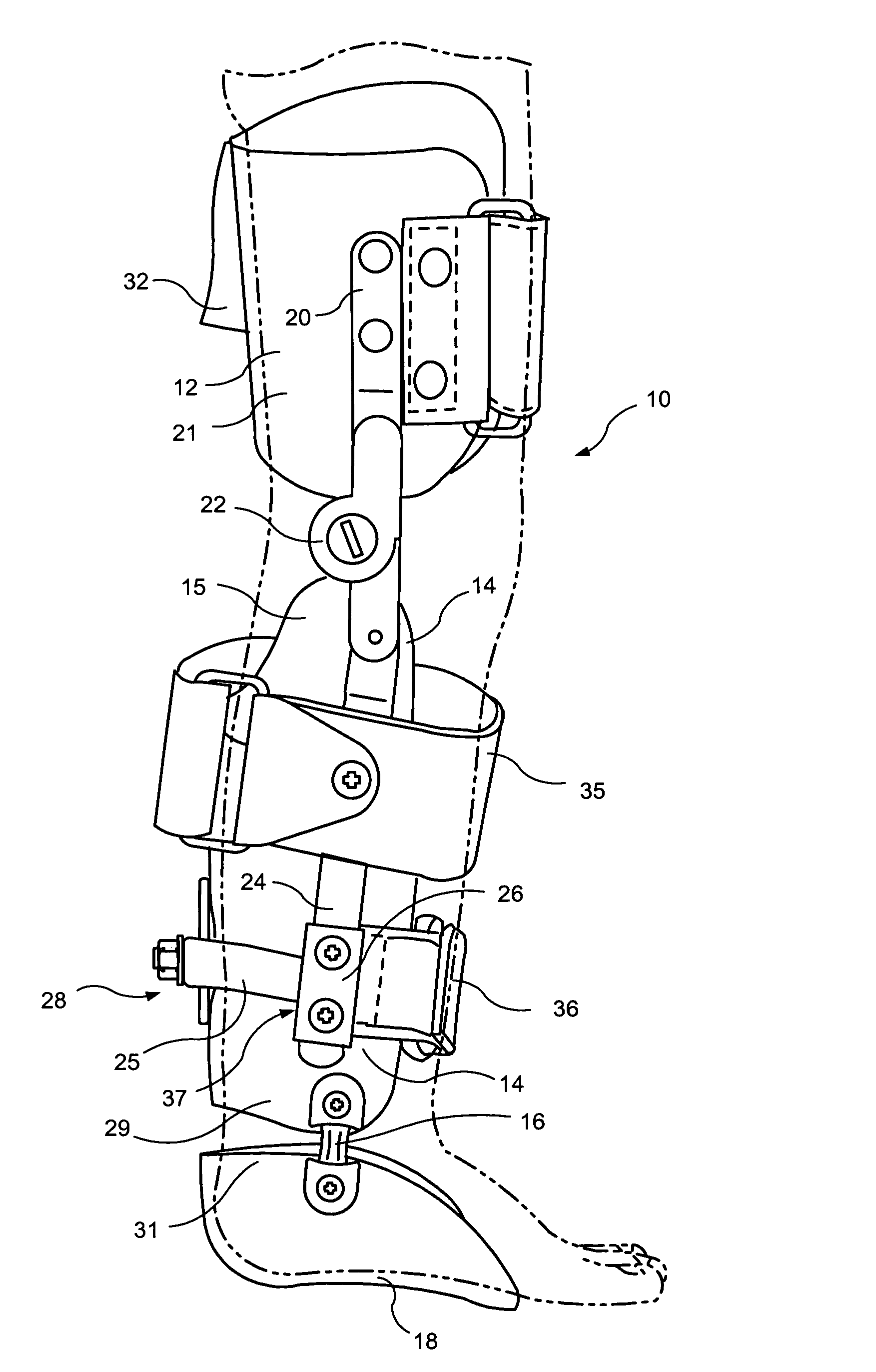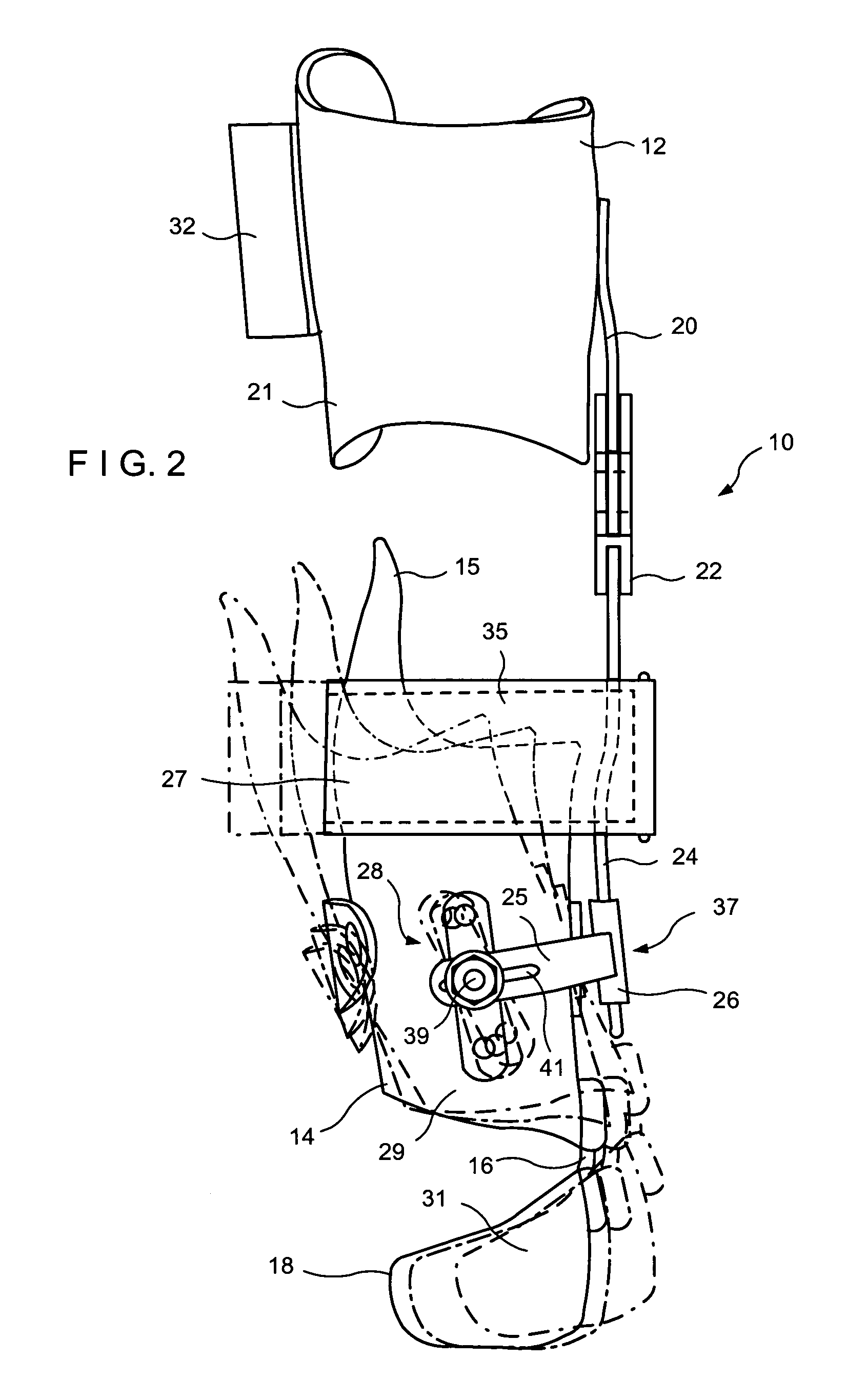Apparatus for correction of leg deformities
a technology for rectification and tibia, applied in the field of orthopaedic devices for rectification of leg deformities, can solve the problems of unnecessarily slow, unnecessary slowness, and abnormalities, and achieve the effect of substantial flexibility
- Summary
- Abstract
- Description
- Claims
- Application Information
AI Technical Summary
Benefits of technology
Problems solved by technology
Method used
Image
Examples
Embodiment Construction
[0026]Referring now more specifically to FIGS. 1–8 of the drawings of the application. An orthotic device or apparatus 10 of the invention consists of a proximal cuff or proximal receiving element 12 adapted to receive an upper thigh area and a distal tibial cuff or distal receiving element 14 adapted to receive a lower leg area or a calf of a human limb. An ankle joint 16 is provided between the distal receiving element 14 and a foot supporting arrangement 18 adapted to receive a foot of a patient On the medial side the proximal receiving element 12 is attached by a proximal strut or proximal connecting element 20 to one side of a knee joint 22. A distal strut or distal connecting element 24 extends from another side of the knee joint 22 and is adapted for connection to the distal receiving element 14. This design requires only a single proximal connecting element 20 associated with the medial side of the proximal receiving element 12 and a single distal connecting element 24 assoc...
PUM
 Login to View More
Login to View More Abstract
Description
Claims
Application Information
 Login to View More
Login to View More - R&D
- Intellectual Property
- Life Sciences
- Materials
- Tech Scout
- Unparalleled Data Quality
- Higher Quality Content
- 60% Fewer Hallucinations
Browse by: Latest US Patents, China's latest patents, Technical Efficacy Thesaurus, Application Domain, Technology Topic, Popular Technical Reports.
© 2025 PatSnap. All rights reserved.Legal|Privacy policy|Modern Slavery Act Transparency Statement|Sitemap|About US| Contact US: help@patsnap.com



